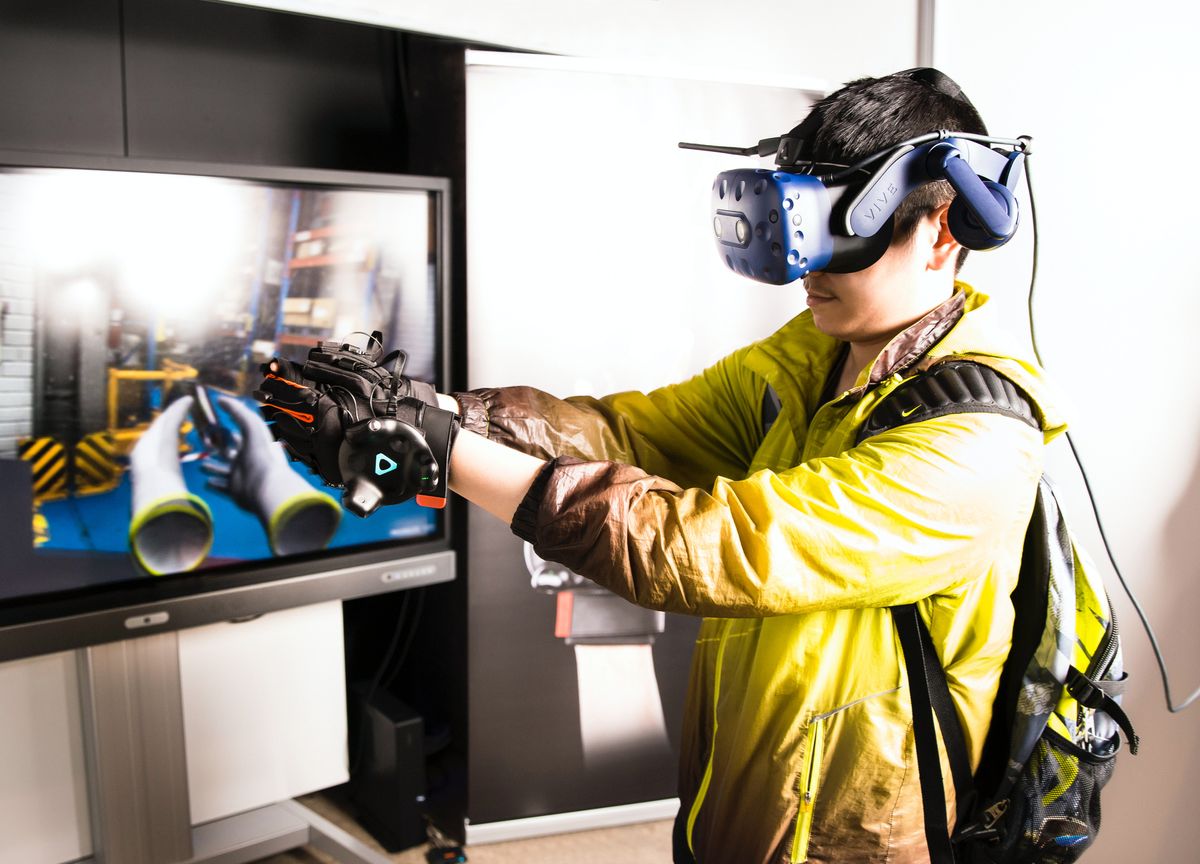Augmented Reality (AR) Defined, With Examples and Uses

Augmented Reality, or AR, is a technology that overlays digital information on top of the user’s view of the real world. This can be done through various means, such as a smartphone or tablet camera, specialized AR glasses, or headsets. This article will explore what AR is, how it works, and how it is being used in various industries today.
What is Augmented Reality?
Augmented Reality(AR) technology uses a combination of computer-generated imagery (CGI) and real-world environments to create an enhanced view of the world. This can be done in real-time, allowing the user to interact with the digital elements as if they were real. AR can be experienced through smartphones, tablets, and specialized AR glasses or headsets.
How does AR work?
AR technology relies on hardware and software to overlay digital information onto the user’s view of the real world. The hardware includes cameras, sensors, and displays that capture and display the real-world environment. The software, including image recognition and tracking algorithms, is used to process and overlay digital information in the real-world environment.
Uses of AR
AR is used in many industries today, including gaming, education, e-commerce, tourism, and advertising.
- Gaming: Games like Pokemon Go and Harry Potter: Wizards Unite uses AR to overlay digital creatures and objects onto the real world, seemingly allowing players to interact with them naturally. This is known as Location-Based AR.
- Education and Training: By overlaying digital information onto real-world objects, students and trainees can learn about complex systems and processes in a more immersive and interactive way. This is known as Task-Based AR.
- E-commerce: Companies like IKEA are using AR to allow customers to virtually try on clothes or see how furniture would look in their homes.
- Tourism: Tourist destinations can use AR to provide visitors with additional information about landmarks and other points of interest.
- Advertising: Advertisers can use AR to create interactive ads that allow users to engage with products more effectively.
- Medicine: By overlaying digital information onto the patient’s body, doctors can use AR to see inside the body and perform surgeries with greater precision. This is known as Medical AR and has the potential to revolutionize the way surgeries are performed.
- Architecture and Construction: By overlaying digital information onto the construction site, architects and builders can see how a building will look and function before it is built. This can save time and money. Additionally, AR can provide workers with real-time information about the building’s systems and processes, improving safety and efficiency.
- Manufacturing: AR can improve the assembly process by overlaying digital information onto the product. Workers can see where parts should be placed and how they should be assembled. This can reduce errors and improve the overall efficiency of the assembly process.
- Art and Design: AR is used to create immersive and interactive experiences for viewers. By overlaying digital information onto sculptures, paintings, and other artworks, viewers can see the artwork in a whole new way. Additionally, AR can be used to create virtual galleries that can be visited by people worldwide.
Pros of Uses of Augmented Reality
One of the most significant advantages of AR is its ability to improve efficiency and productivity. By overlaying digital information in the real world, users can access information and perform tasks more quickly and easily. This can be especially beneficial in manufacturing, construction, and medicine, where precision and accuracy are critical.
Another advantage of AR is its ability to bridge the gap between the digital and physical worlds. This can improve communication and collaboration between different teams and departments and companies and their customers.
Cons of Uses of Augmented Reality
Despite the many benefits of AR, some challenges need to be addressed. One of the biggest challenges is ensuring that digital information is accurate and relevant. This requires high precision and accuracy in the tracking and image recognition algorithms. Additionally, there are also concerns about privacy and security, as AR technology can be used to collect and store personal data.
Another challenge is the cost of AR technology, as it can be expensive to develop and implement. However, as the technology becomes more widely adopted and the cost of components decreases, it will become more accessible to businesses and individuals.
There is also a need for standardization in AR technology, as different platforms and devices may not be compatible with each other. This can make it difficult for businesses and developers to create and distribute AR content.
Despite these challenges, the potential of AR is undeniable. In the future, we will likely see more and more industries adopt AR technology to improve their operations and provide better customer service. For example, in retail, consumers can use AR to virtually try on clothing or visualize furniture in their homes before making a purchase. In the field of transportation, AR can be used to provide real-time information to drivers and passengers, such as traffic conditions and alternate routes. Furthermore, in the field of tourism, AR can be used to provide visitors with interactive and engaging information about historical sites and landmarks.
Summary
Augmented Reality is a powerful technology that has the potential to change the way we interact with the world. While there are challenges to overcome, the benefits of AR are numerous, and it is likely to play an increasingly important role in our lives in the future. As technology advances, we can expect to see even more innovative uses of AR in various fields and industries. With the potential to improve efficiency, communication, and collaboration, AR is poised to impact how we live and work significantly.
Overall, Augmented Reality technology is rapidly evolving with many potential uses. As technology advances, we can expect to see even more innovative services of AR in various fields. While there are challenges to overcome, the benefits of AR are numerous, and it is likely to play an increasingly important role in our lives in the future.
Conclusion
In conclusion, Augmented Reality technology has many potential uses and is being implemented in various industries. From gaming and education to e-commerce, tourism, and advertising, AR is being used to create more immersive and interactive experiences. It has the potential to revolutionize the way we interact with the world and has vast opportunities in the future. As technology advances, we can expect to see even more innovative uses of AR in various fields.





